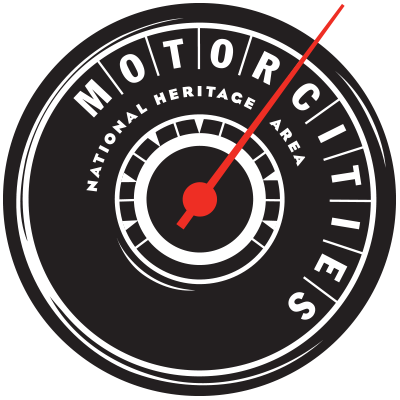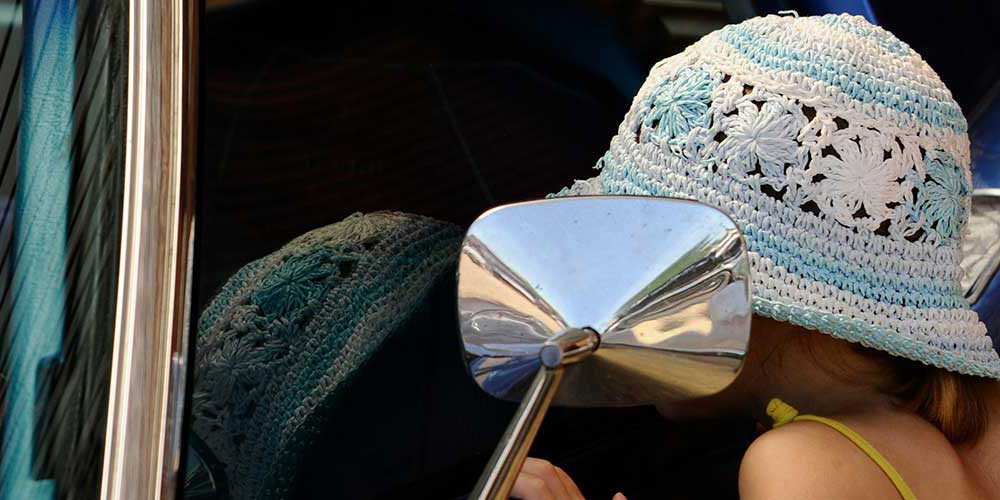By Robert Tate, Award-Winning Automotive Historian and Researcher
Images Courtesy of the Robert Tate Collection
Published 7.9.2025
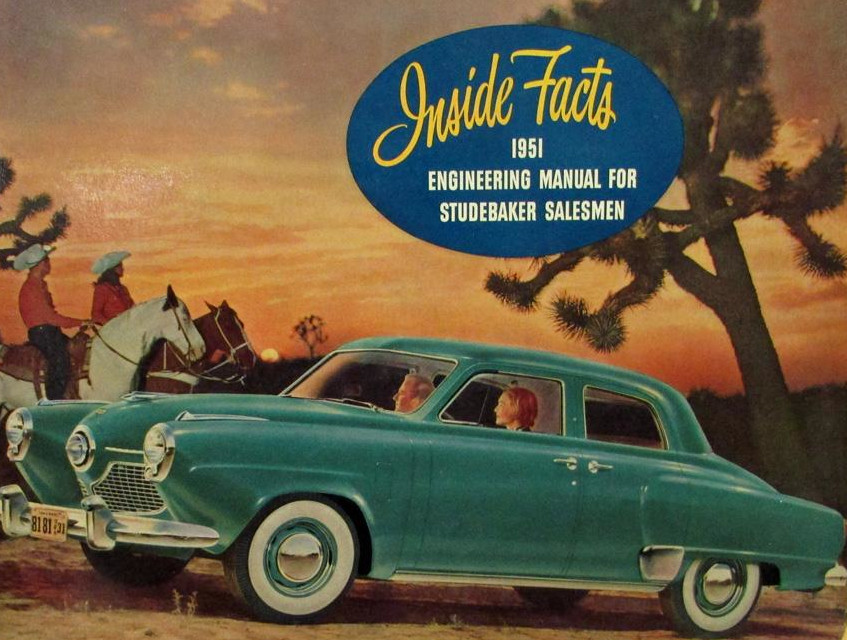 The 1951 Studebaker sales manual (Robert Tate Collection)
The 1951 Studebaker sales manual (Robert Tate Collection)
If you were a salesman at a Studebaker dealership in 1951, you would use a manual called “Inside Facts” featuring all the relevant information for their full line of vehicles. The early 1950s was an era when people would go to the automobile dealership to purchase a new vehicle for their family.
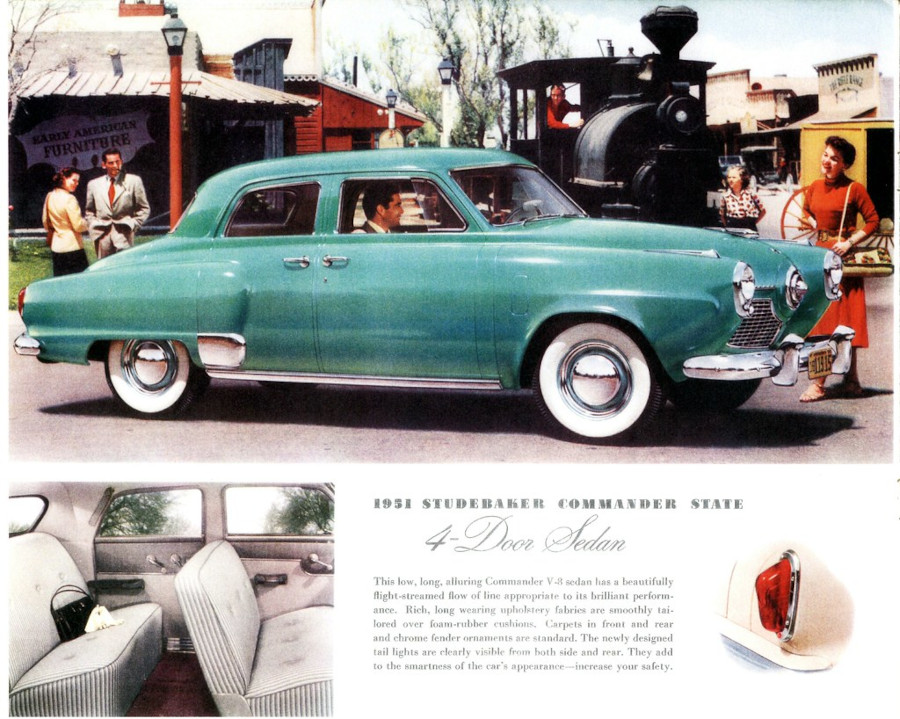 A 1951 Studebaker 4-door sedan (Robert Tate Collection)
A 1951 Studebaker 4-door sedan (Robert Tate Collection)
For perspective, here a few facts from 1951. Most of the public did not yet own a television set. A new 1951 Studebaker cost $1,487, and the price of a gallon of gas was 27 cents. The average price for purchasing a new home was $7,354.
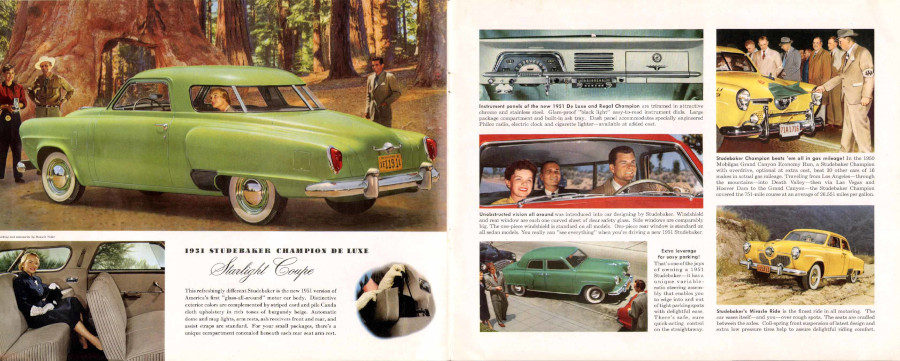 The 1951 Studebaker Starflight coupe (Robert Tate Collection)
The 1951 Studebaker Starflight coupe (Robert Tate Collection)
The Studebaker Inside Facts manual is very rare, collectable and a part of automotive history. The material reflects and illustrates our culture at the time, while sharing the styling of the new 1951 Studebaker models.
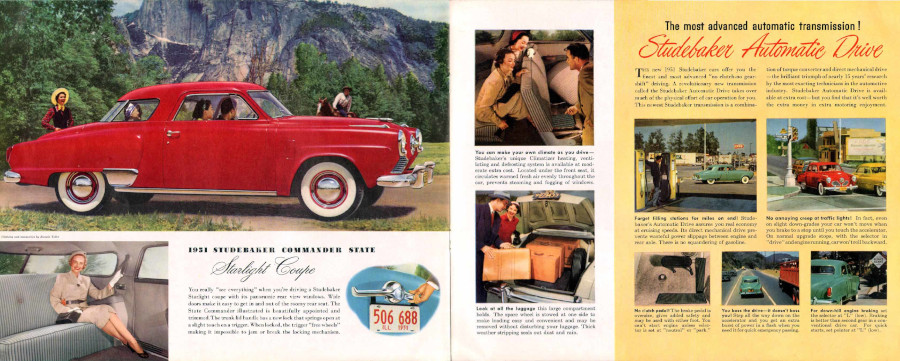 Another view of the 1951 Studebaker Starflight coupe (Robert Tate Collection)
Another view of the 1951 Studebaker Starflight coupe (Robert Tate Collection)
Studebaker at the time said, “The main purpose of Inside Facts is to give Studebaker salesmen the basic product information that will help them form their own convictions about the merits of Studebaker passenger cars.”
The one design feature that always stood out with the 1950-1951 Studebaker models was the bullet nose front-end styling that some liked and others did not. Automotive historians have said that Studebaker owners had a strong feeling of pride in driving a car that reflected their discriminating taste and good judgement.
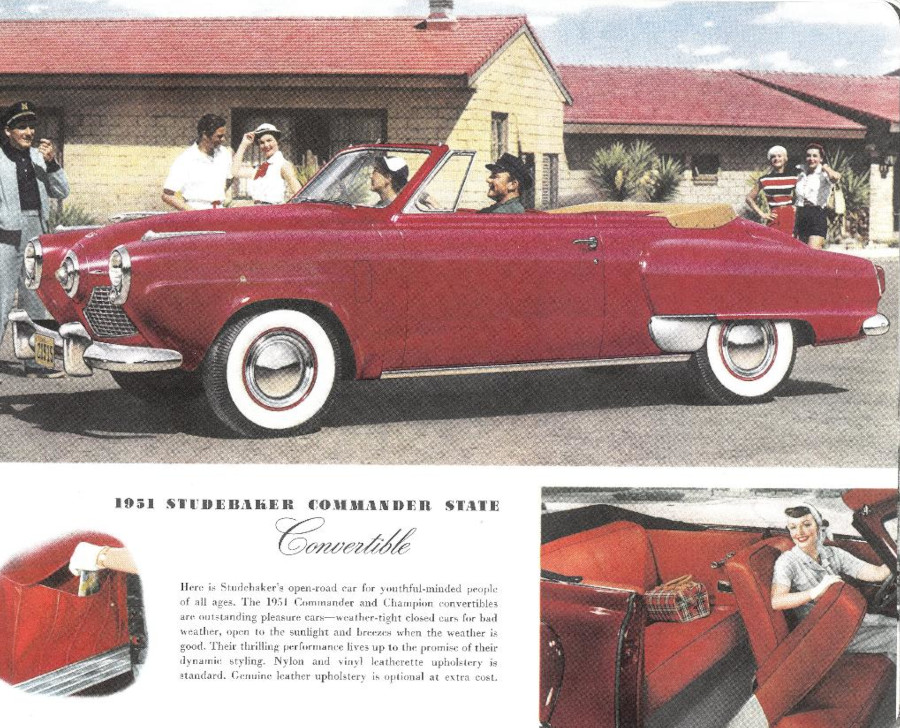 A 1951 Studebaker convertible (Robert Tate Collection)
A 1951 Studebaker convertible (Robert Tate Collection)
Patrick Foster, the author of ”Studebaker: The Complete History” said, “The year 1951 was important for Studebaker because it was the year the company introduced its new V-8 engine.” Styling revisions were made to the front end, with a new grille and revised spinner.
The 1951 Studebaker models were designed under the direction of Raymond Loewy, Robert E. Bourke and Eugene Hardig, chief engineer. The 1951 models were derived from the 1947 Studebaker design idea, which was Loewy’s advanced thinking for the new look postwar design. For 1951, Studebaker offered a dramatic new version of the flight-streamed next look.
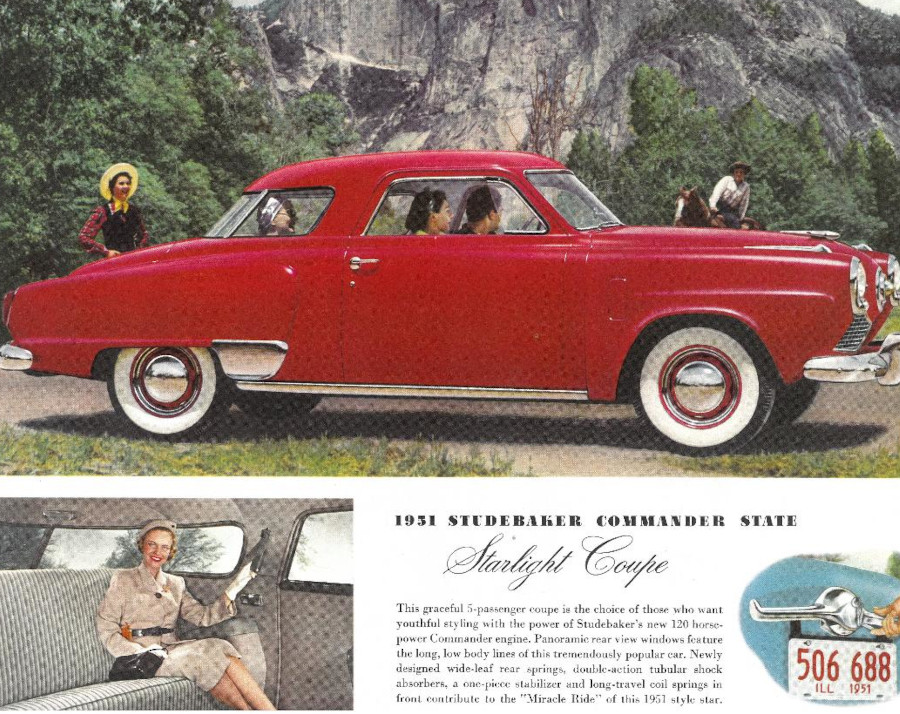
The most important part of the 1951 Studebaker Inside Facts guide was techniques to close the sale. The Studebaker dealer network offered nationwide service for their owners when traveling. Dealerships also offered service from experienced mechanics working with scientifically accurate testing and repair equipment.
Inside Facts also provided frame and body strength information, along with the full range of acceleration for each model.
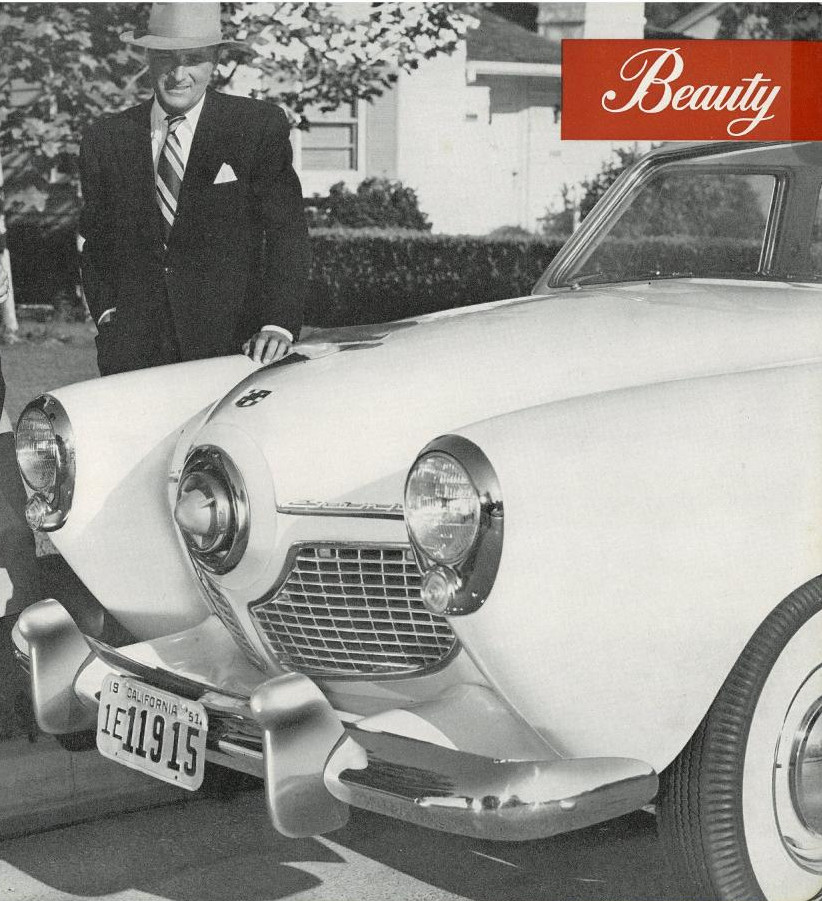 The 1951 Studebaker front end design (Robert Tate Collection)
The 1951 Studebaker front end design (Robert Tate Collection)
In 1951, Studebaker introduced a brand-new Commander V-8 engine which most drivers admired, along with “Miracle Ride” passenger comfort featuring soft-cushioned, spacious seats with ample leg and head room and an all-weather climate system. Studebaker’s convertibles were upholstered with rich nylon and vinyl leatherettes in maroon or tan color combinations only.
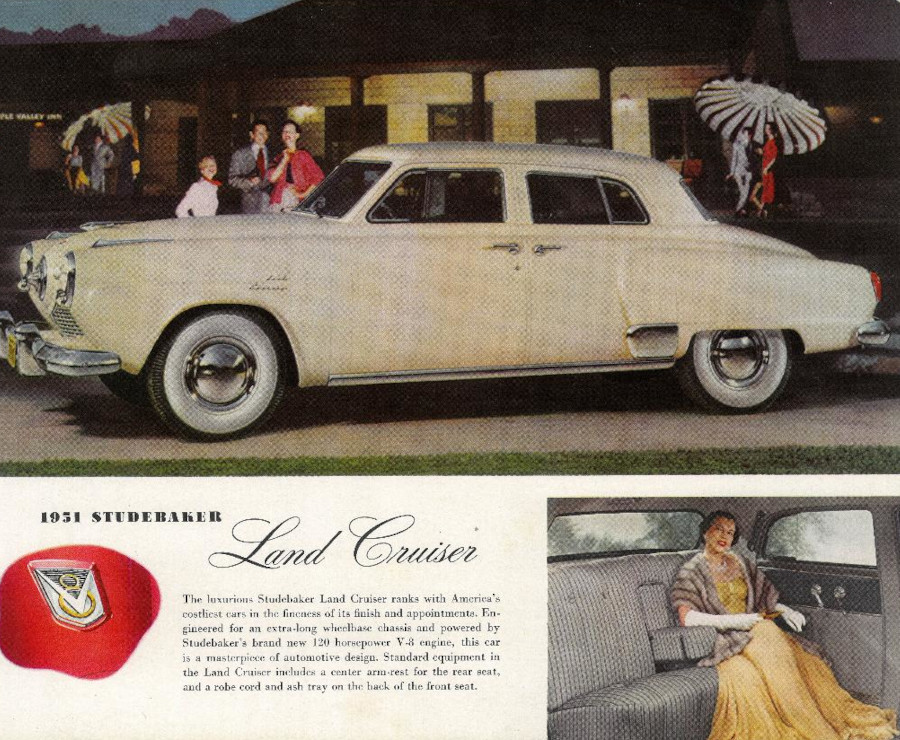 The 1951 Studebaker Land Cruiser (Robert Tate Collection)
The 1951 Studebaker Land Cruiser (Robert Tate Collection)
In conclusion, public response was very good for Studebaker sales in 1951, leading to huge profits for the year of $503,308,865.88, which broke the half billion-dollar mark for the first time in the company’s history. Today, the 1951 Studebaker models are very collectable, and many Studebaker clubs continue the legacy of these great automobiles.
Bibliography
Studebaker Corporation. “Inside Facts 1951 Engineering Manual For Studebaker Salesmen.” 1951.
Hall, Asa E., & Langworth, Richard M. “The Studebaker Century: A National Heritage.” 1983.
Foster, Patrick. “Studebaker: The Complete History.” MBI Publishing, 2008.
